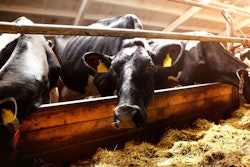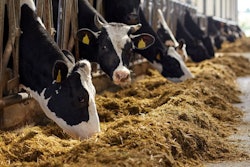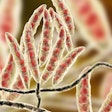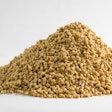
Study finds sugar beet pulp up to 12% in post-weaning diets can be used to replace zinc oxide.
The ban on antibiotics and now of zinc oxide as growth promoting agents in piglet feeds in the EU has brought into the spotlight the importance of fiber. In fact, we have come to realize there is no such thing as fiber or crude fiber, but instead a great family of fibers with distinct and often opposing functions in the gut.
One such fiber family is that of pectins, hereafter referred to as pectin for simplicity, which is a gelling agent under the right conditions. It is used in foodstuffs such as marmalades, as one of its most common uses.
Pectin, however, is not included in the crude fiber analysis, like some other members of the greater fiber family. As such, its role and functional properties are little known and always examined in isolation. Pectin is a prized nutrient in diets for ruminants, especially dairy cows, where it promotes overall fiber digestibility and ensures optimal rumen functionality. Although few know about pectin, most dairy nutrition professionals use it extensively through sugar beet pulp, which contains about 20% pectin.
A recent study tried to replace zinc oxide used at pharmacological levels (3,000 ppm) with sugar beet pulp, expecting the pectin fraction to regulate gut microflora, much like it does in ruminants. Feeding sugar beet pulp to piglets is not a new idea and, in fact, older research has shown that feeding up to 15% sugar beet pulp in piglets up to 20-25 kg is acceptable. But, this is research in which antibiotics and perhaps other gut health-controlling agents (like copper sulfate) were used.
In the modern study (Yan et al. Journal of Animal Science and Technology [2017] 59:18; DOI 10.1186/s40781-017-0142-8), piglets were fed diets with 3%, 6%, 9% and 12% sugar beet pulp against a diet with high levels of zinc oxide in a two-phase feeding program that lasted five weeks post-weaning. Unfortunately, there was no negative control (no zinc oxide) and this places a big question mark on the study, but we shall continue accepting the industry practice of using zinc oxide as a blanket application and not as a case-based tool.
From this study, results indicated that there were no significant differences in growth performance or incidence of diarrhea among any of the treatments. There was a (positive) linear response in Lactobacillus counts as sugar beet pulp supplementation increased. Regarding nutrient digestibility, sugar beet pulp additions had no effect on ash, fat, fiber or protein. This was expected, because pectin in contrast to some other fibers does not reduce overall dietary nutrient digestibility.
In conclusion, sugar beet pulp up to 12% in post-weaning diets can be used to replace zinc oxide, but this claim requires verification by a study in which a negative control is included. In addition, it would be interesting to test the addition not only of sugar beet pulp but also of the equivalent amount of purified pectin. In pre-weaned calves, pectin is one of the measures against neonatal diarrhea, and this might be of significance to piglets as well.
















